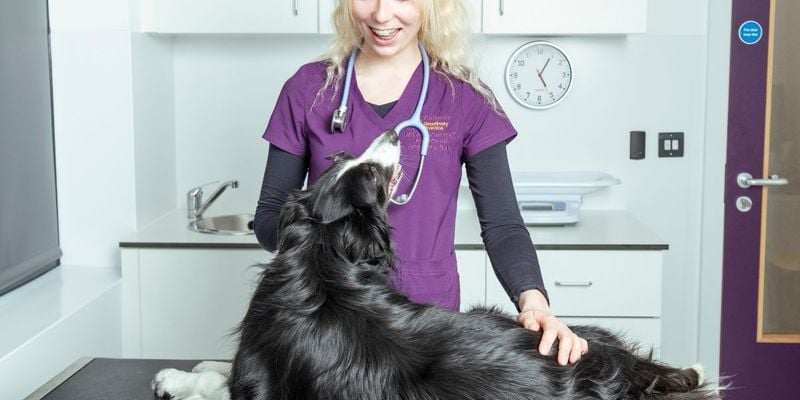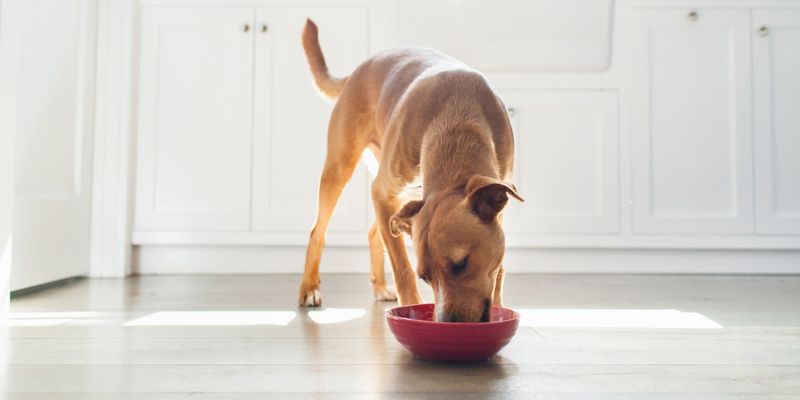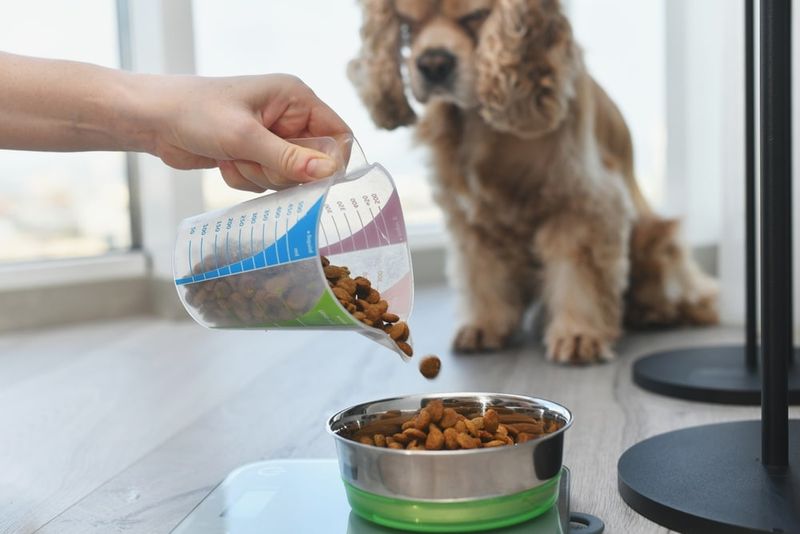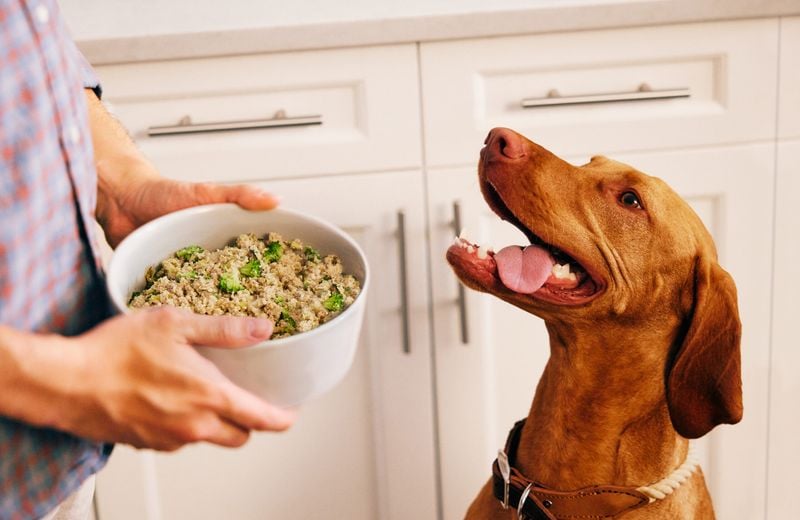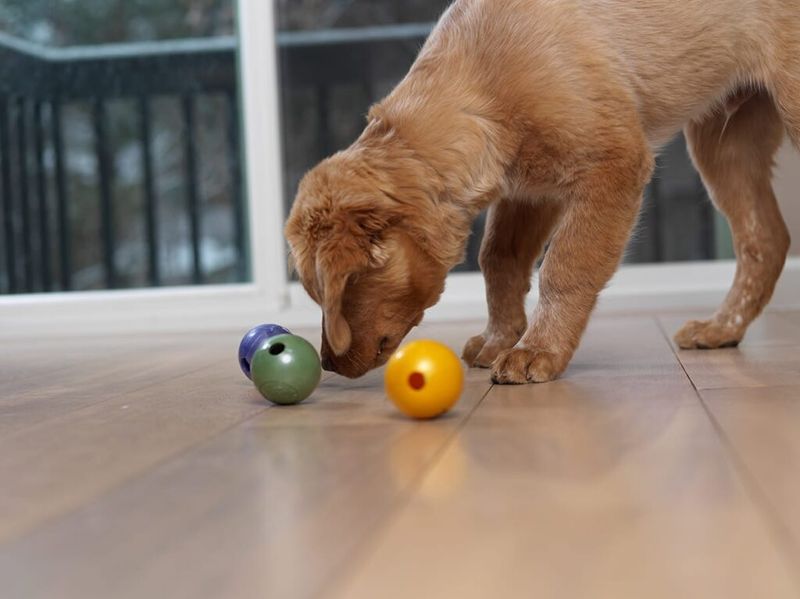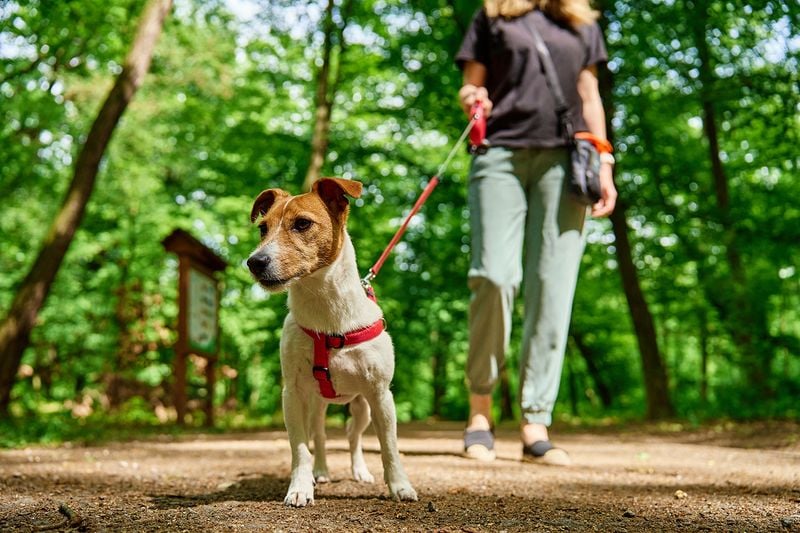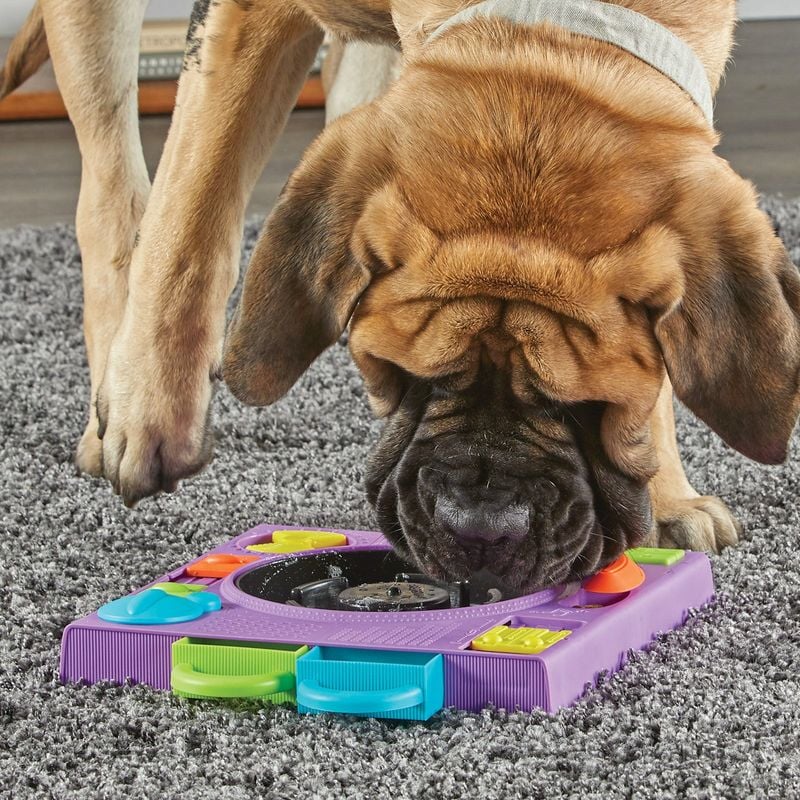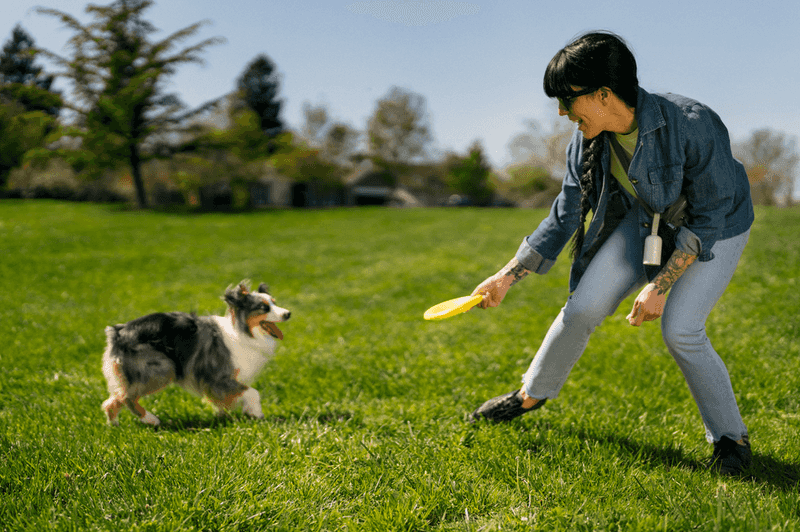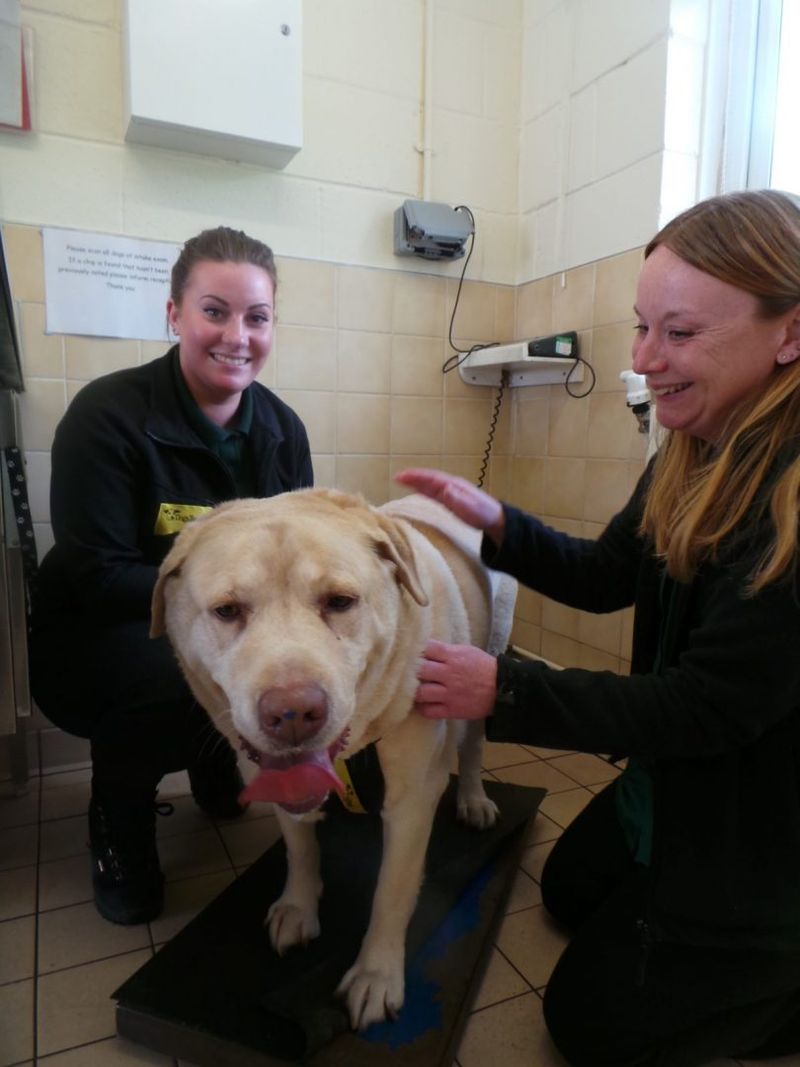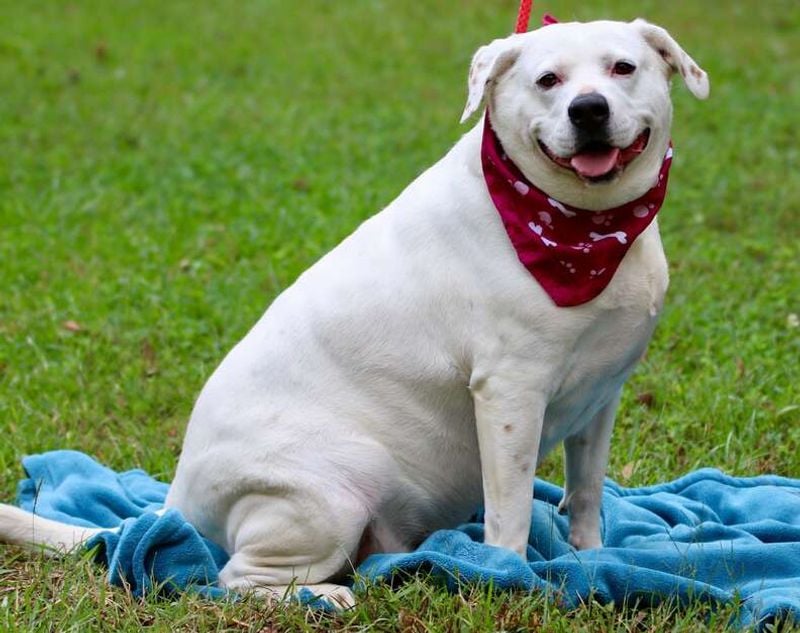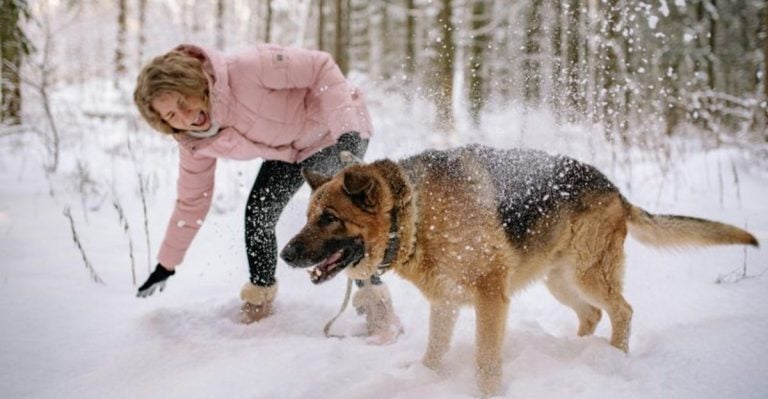12 Simple Steps to Help Your Dog Lose Weight
If your pup is carrying a few extra pounds, you’re not alone. Canine obesity is more common than most pet parents realize, and those extra pounds can silently shorten your dog’s lifespan and impact their overall quality of life.
The good news? You don’t need extreme diets or drastic measures to make a difference. Helping your dog lose weight is all about consistency, small changes, and understanding what truly motivates them—whether it’s food, praise, or play.
From adjusting portion sizes to making walks more fun, each step you take has long-lasting benefits. Let’s break down the simplest ways to help your dog shed the weight and feel better than ever.
1. Visit the Vet First
Before embarking on a weight loss journey with your dog, a visit to the vet is crucial. This step ensures that any underlying health issues, such as hypothyroidism or joint pain, are identified. Knowing your dog’s target weight can guide your efforts.
A vet can provide expert advice on diet and exercise tailored to your dog’s needs. They’ll assess your dog’s overall health condition and create a realistic weight loss goal. This prevents any potential harm from an inappropriate diet.
Moreover, regular check-ups keep track of progress. These visits are opportunities to adjust plans and celebrate milestones. Knowing your vet supports you is reassuring.
2. Switch to a High-Protein, Low-Calorie Dog Food
Choosing the right food is a game-changer for your dog’s weight loss. Opt for a high-protein, low-calorie formula approved by your vet. This type of food provides essential nutrients while helping reduce calorie intake.
High-protein diets support muscle maintenance, crucial for dogs during weight loss. They make your dog feel full longer, reducing the urge to overeat. The right balance of nutrients is vital for maintaining your dog’s energy levels.
Consulting your vet about brands and portions ensures you’re on the right track. A tailored diet helps prevent nutritional deficiencies and supports gradual weight loss.
3. Measure Meals Carefully
Precision is key when it comes to feeding your dog. Using a measuring cup or scale ensures accuracy and prevents overfeeding. Eyeballing portions often leads to unintended weight gain.
Accurate measurements allow better control over calorie intake. This small habit can have a significant impact on your dog’s weight management journey. Consistency in portion sizes helps establish a routine.
Regularly monitoring your dog’s weight and adjusting portions as needed is essential. This practice ensures your dog is getting just enough food to meet its energy requirements without excess.
4. Stick to a Feeding Schedule
Establishing a consistent feeding schedule provides structure for your dog’s day. Feeding once or twice daily, then removing uneaten food after 15 minutes, prevents overeating.
Scheduled feeding helps regulate your dog’s metabolism, promoting weight loss. It also discourages grazing, which is often a cause of weight gain. Dogs thrive on routine, making this a beneficial practice.
Consistency in feeding times can improve your dog’s digestion and energy levels. Maintaining a schedule helps you monitor food intake, essential for tracking progress and adjusting the diet as needed.
5. Cut Out the Table Scraps
Table scraps might seem harmless, but they pack hidden calories. Saying no to begging helps establish healthy eating habits and prevents weight gain.
Human food is often too rich for dogs and doesn’t meet their nutritional needs. Removing this temptation helps avoid bad habits and supports weight loss goals. Consistent boundaries are key.
Rather than sharing your meal, offer your dog a healthy treat or toy instead. Reinforcing positive behavior encourages your dog to focus on its food, not yours, maintaining a balanced diet.
6. Swap Treats for Praise or Toys
Transforming your reward system can make a big difference. Instead of regular treats, use praise, toys, or training rewards. This shift reduces calorie intake.
Low-calorie treats, when used sparingly, still have their place. However, relying on affection and interactive play is more beneficial. It strengthens your bond and keeps your dog’s weight in check.
This approach encourages an active lifestyle, essential for weight management. It also helps maintain discipline in your dog’s diet, reinforcing healthier habits over time.
7. Add Daily Walks
Incorporating daily walks into your routine is a great way to increase your dog’s physical activity. Start slowly and gradually build up to 30–60 minutes daily, depending on your dog’s age and breed.
Regular walks not only help burn calories but also improve your dog’s cardiovascular health. They provide mental stimulation and prevent boredom, a common cause of overeating.
As your dog becomes more active, you may notice improved behavior and energy levels. Walking is a versatile exercise that can be adapted to your dog’s capabilities and needs.
8. Try Puzzle Feeders
Puzzle feeders are an excellent tool for slowing down your dog’s eating pace. They provide mental stimulation, keeping your dog engaged and satisfied.
By making mealtime an activity, puzzle feeders help your dog feel fuller longer. This can prevent overeating and aid in weight management. The challenge they provide is both fun and beneficial.
Introducing a puzzle feeder can enhance your dog’s problem-solving skills. It turns a regular meal into an exciting game, promoting a healthier eating habit over time.
9. Incorporate Playtime
Playtime is a fantastic way to burn calories while having fun. Games like fetch, tug-of-war, and gentle agility exercises boost your dog’s physical activity.
Engaging in play strengthens the bond between you and your dog and keeps them entertained. It encourages an active lifestyle, crucial for maintaining a healthy weight.
In addition to physical benefits, playtime also supports your dog’s mental well-being. It provides an outlet for energy and prevents boredom-related behaviors, contributing to a well-rounded routine.
10. Track Progress Weekly
Tracking your dog’s progress is essential for staying on course. Weigh your dog at the same time each week to monitor changes.
Looking for slow, steady progress is key. Rapid weight loss can be harmful, so aim for gradual changes. Celebrate small victories to stay motivated.
Regular tracking allows you to adjust the plan if needed. It ensures you’re meeting your dog’s needs and keeping its health a top priority throughout the weight loss journey.
11. Include the Whole Family
A successful weight loss journey involves everyone in the household. Consistency is crucial, so ensure all family members follow the same feeding rules.
Avoid overfeeding or sneak-treating by communicating the plan clearly. This unity supports your dog’s goals and reinforces healthy habits.
Getting everyone on board creates a supportive environment. It prevents mixed signals and ensures your dog receives the best care possible during this important time.
12. Don’t Rush It
Patience is essential for healthy weight loss. Aim for a gradual reduction of 1–2% of body weight per week, ensuring your dog’s health remains a priority.
Rushing the process can lead to health complications and stress. Emphasizing a steady approach supports long-term success and well-being.
Along the journey, celebrate milestones and adjust goals as needed. Keeping a positive outlook fosters a successful weight loss experience for both you and your dog.

